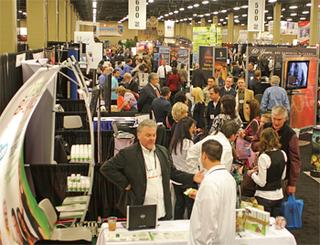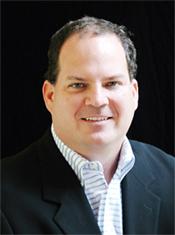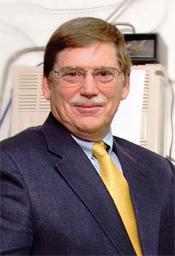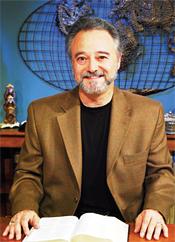NRB Blends Technology and the Spiritual Side

Thousands will be converging in Nashville for the 68th annual National Religious Broadcasters Convention and Exposition.
NASHVILLE—Religious broadcasting has been with us almost since radio broadcasting began in the 1920s and was ready to move into the new medium of television as soon as it was perfected.
Soon an estimated 5,000 to 6,000 people with ties to religious broadcasting will be making their way to the Gaylord Opryland Resort and Convention Center for the 68th annual National Religious Broadcasters Convention and Exposition which takes place between Feb. 26 and March 1.
This year's event promises to be anything but an equipment show with some sessions on taking religious messages to the air. The 21st century has brought with it unprecedented changes and challenges, and these are reflected in the way both the nation's churches and religious broadcasters conduct business.
Forums are planned to explore such changes and many other issues that relate to broadcast ministries.
Religious broadcasters find themselves sharing with secular broadcasters such pressing issues as increasing FCC regulatory demands; more sophisticated audiences; conversion to a digital broadcasting platform, targeting of specific audiences; and the migration of these audiences to other forms of entertainment and enlightenment.
SOCIAL MEDIA AND HANDHELD DEVICES
This year's NRB event launches with a two-part Super Session on "Social Media Strategies," featuring Mark Ramsey of founder Mark Ramsey Media and Rey Mena, co-founder and president of Emmis Interactive.

Michael Flaherty A second Super Session, "Connecting with Audiences in an Age of Distraction: A Conversation about Movies, Entertainment, and the Future of Media with Michael Flaherty," will build on Flaherty's work in producing films that provide family entertainment. The session will offer useful information on reaching audiences in this day and age of iPods, electronic games and texting.
Flaherty is president and co-founder of Walden Media, which has released such award-winning productions as "Journey to the Center of the Earth" and "Charlotte's Web."
In speaking about the impact of the current generation of personal electronic devices, Flaherty observed that a level of co-existence was required and that they could be used to advantage in reaching audiences.
"We have to work on the premise that these devices are not the enemy," Flaherty said. "Taking the Luddite approach just hasn't worked."
Other sessions of special interest include Monday presentations on regulatory issues as they relate to broadcasters. One of these is devoted to license renewal and will feature two communications attorneys, Harry Martin, of Fletcher, Heald and Hildreth PLC; and Jeff Southmayd of Southmayd and Miller, who will provide information on exactly what's necessary to retain an FCC license to broadcast.
SHRINKING SPECTRUM ISSUES
Commercial/secular television broadcasters aren't the only ones who may be impacted by the FCC's latest spectrum reallocation plan. As part of the NRB's proceedings, a special forum has been established to examine the impact of this latest Washington RF real estate reallocation.

Warren Trumbly One of the panelists is Warren Trumbly, vice president of a low-power television station that serves viewers in the San Francisco Bay area.
"Most of the religious broadcasters run lower-power operations and they are the most vulnerable," said Trumbly. "I estimate that 20 percent of the full-power stations might be taken off the air, but 80 percent of the low-power stations could be affected. Any spectrum reduction will unfairly impact religious broadcasters. We make up a large number of the low-power stations. Close to half, if not more, of the low-power stations are religious broadcasters providing family content; it's not just preachers preaching, but wholesome entertainment."
Another panelist, Dr. Randy Weiss, president of Cross Talk International Radio and TV, has even stronger feelings about plans to eliminate more broadcast channels.
"Religious broadcasters will find the new world of limited access television to be most unfriendly in the hostile environment of reduced spectrum controlled by giant corporations and government spoon-fed gate-keepers," Weiss said. "Please understand that our problem is not spectrum. Plenty of spectrum exists. The problems are bad technology and a government that refuses to allow current licensees to use the spectrum effectively. The existing unicast method of Internet video delivery will fail to meet the expected demands."

Dr. Randy Weiss Appearing with Trumbly and Weiss in the "Spectrum: Resurrection or Renaissance" panel are Peter Tannenwald from the Fletcher, Heald and Hildredth legal firm; Vern Fotheringham, chairman of the Cellular Terrestrial Broadcasting Group; and Greg Herman, CEO of Spectrum Evolution. The discussion will be moderated by Jim West, president of Legacy TV.
The group will examine the latest spectrum grab plan in detail and look at the future of off-air television, and what broadcasters may be able to do to head off the loss of more channels to wireless broadband providers.
And the Internet is certainly not being neglected at this year's NRB convention, with special programs planned on success stories involving ministries and the World Wide Web, as well as a study in proven and effective non-commercial broadcaster fund raising scenarios involving the Internet.
Television production is also in the limelight, with a special seminar scheduled to provide information and suggestions for effectively telecasting from houses of worship.
The session "Multi-Camera Setup and Direction: How to Record and Produce a Program from Many Angles," will present the differences between directing studio shows, live events and reality shows.
The session will feature Greg Flessing, president of Fresh Air Media and Don Hyatt, president of Red.E.Media. Phil Bransom, producer/director/owner of Phil Bransom Productions will moderate the session.
Another TV production-geared forum will feature Emmy Award winner Doug Smart from Asbury University. His presentation, "Production: Nuts & Bolts—How to Do It Right the First Time" will provide tips and techniques for enhancing production values and saving time spent in production. Rod Payne from Christian Family Network Television will be on hand to moderate the session.
Another presentation that will be of interest to many attendees in this climate of controlling programming costs by repurposing content is "Preservation and Access of a Culturally Iconic Library."
Presenters Robert Schumacher, director of business development at Deluxe Archive Solutions, and Jeff Sotzing, owner of the Carson Entertainment Group, will address the challenges involved in preserving, digitizing, describing and fully transcribing "every spoken word" in "The Tonight Show Starring Johnny Carson," during its 30-year run.
Schummacher and Sotzing will also share information on another such project that's currently underway, the transcribing of four years of NRB convention presentations.
EQUIPMENT SHOW, TOO
Another very important part of every NRB convention is the exhibit floor. This year, more than 200 vendors will be showcasing their wares across 130,000 square feet of floor space, making this the largest such market place dedicated to religious media professionals.
Television products will be well represented, with firms including Axcera, Avid, ERI, Florical, Jampro, Linear Industries, Litepanels, Ross Video and Snell, showing off their latest technologies.
Get the TV Tech Newsletter
The professional video industry's #1 source for news, trends and product and tech information. Sign up below.
James E. O’Neal has more than 50 years of experience in the broadcast arena, serving for nearly 37 years as a television broadcast engineer and, following his retirement from that field in 2005, moving into journalism as technology editor for TV Technology for almost the next decade. He continues to provide content for this publication, as well as sister publication Radio World, and others. He authored the chapter on HF shortwave radio for the 11th Edition of the NAB Engineering Handbook, and serves as editor-in-chief of the IEEE’s Broadcast Technology publication, and as associate editor of the SMPTE Motion Imaging Journal. He is a SMPTE Life Fellow, and a Life Member of the IEEE and the SBE.

